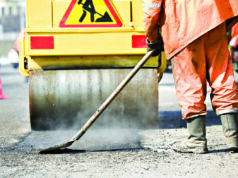When was the last time you really looked at your ceiling?
Cracks or sagging might seem minor, but these are common signs of ceiling stress that shouldn’t be ignored.
Building and Energy is reminding homeowners to act promptly on warning signs of ceiling stress to prevent a potentially dangerous and costly collapse.
A collapsed ceiling can cause serious injury to anyone underneath and extensive damage to a room’s contents and structure.
Causes of ceiling failure include poor installation, storm damage, water leaks, inappropriate materials or loads, or incorrect access to the roof space.
Knowing how to spot the telltale signs of a stressed or failing ceiling and acting early is key avoiding the risks, costs and inconvenience associated with a ceiling collapse. Reinforcement and repairs will almost always be a more straightforward option compared to a full ceiling replacement.
So, what should you look out for? Common warning signs of ceiling failure include loud cracking sounds, sagging or dropping of plasterboard sheeting and/or the cornice, visual cracking and small circular marks or blisters appearing in a line on the ceiling.
These marks indicate that the plasterboard sheeting may be pulling away from the beam above it.
If you spot any of these signs, don’t wait – arrange inspection and repair of the affected areas as soon as possible. Homeowners should contact the builder in the first instance. A properly maintained ceiling should last the life of the building. If you’re unsure who built your home, your local government may have this information.
Tenants should promptly report concerns to their landlord or property manager.

Good ceiling care can help prevent future damage.
Building and Energy recommends homeowners avoid accessing the ceiling space or storing items there – this is potentially hazardous and heavy loads can damage the ceiling framing or sheeting. Roof leaks should be repaired and any moisture-damaged insulation or plasterboard should be replaced.
It’s also important to check that exhaust fans and air conditioning outlets are discharging to the outside, not into the ceiling space.
Due to potential electrical hazards, anyone who needs to access a ceiling space, including tradespeople, should turn off the mains power before going up.
A collapsed ceiling can cause serious injury and significant damage. Regularly checking your ceiling and acting on warning signs can help keep your home safe.
For further information, read Building and Energy’s Spontaneous Ceiling Collapse guide or contact 1300 489 099.














